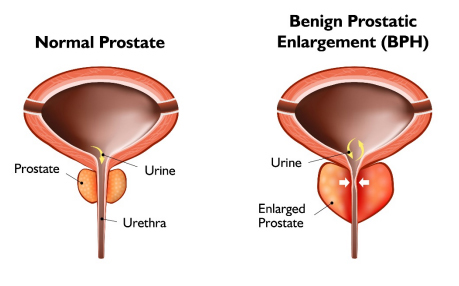Benign Prostatic Hyperplasia (BPH)
“Why do I keep peeing so much?”
This condition is called benign prostatic hyperplasia (BPH). It’s common, and treatable.
About 50% of men 51–60 years of age have BPH.
That number jumps to 70% for men 60–69,
and 80% for men 70 years and older.

Who do you see for prostate problems?
A board-certified urologist will be able to provide you with the most skilled care for BPH, as well as other prostate issues and urological conditions. At Urology Nevada, all of our physicians are board-certified by the American Board of Urology.
How do prostate doctors diagnose and treat BPH?
The physicians at Urology Nevada are experts at diagnosing and treating BPH. To diagnose BPH, we collect personal and family medical history, conduct a physical exam and administer appropriate tests. We can also obtain additional diagnostic information by using a small camera to visualize the prostate or with an ultrasound image. Among the tests is a highly predictive, non-invasive bladder function test called the UroCuff® Test.
There are a variety of treatment approaches for BPH, depending on the degree of enlargement in the prostate, including medication, surgery and minimally invasive procedures. Our prostate doctors are knowledgeable on the latest treatments for enlarged prostate.
Treatment Options
In Northern Nevada, Urology Nevada is who you see for prostate problems.
If you’re asking, “Why do I keep peeing so much?” or “Why does it hurt when I pee?” – we have answers, and we have treatments. You don’t have to live with the symptoms of an enlarged prostate. Our expert prostate doctors can diagnose and treat your BPH, so you can get back to living well. Appointments are typically available within ten days.





